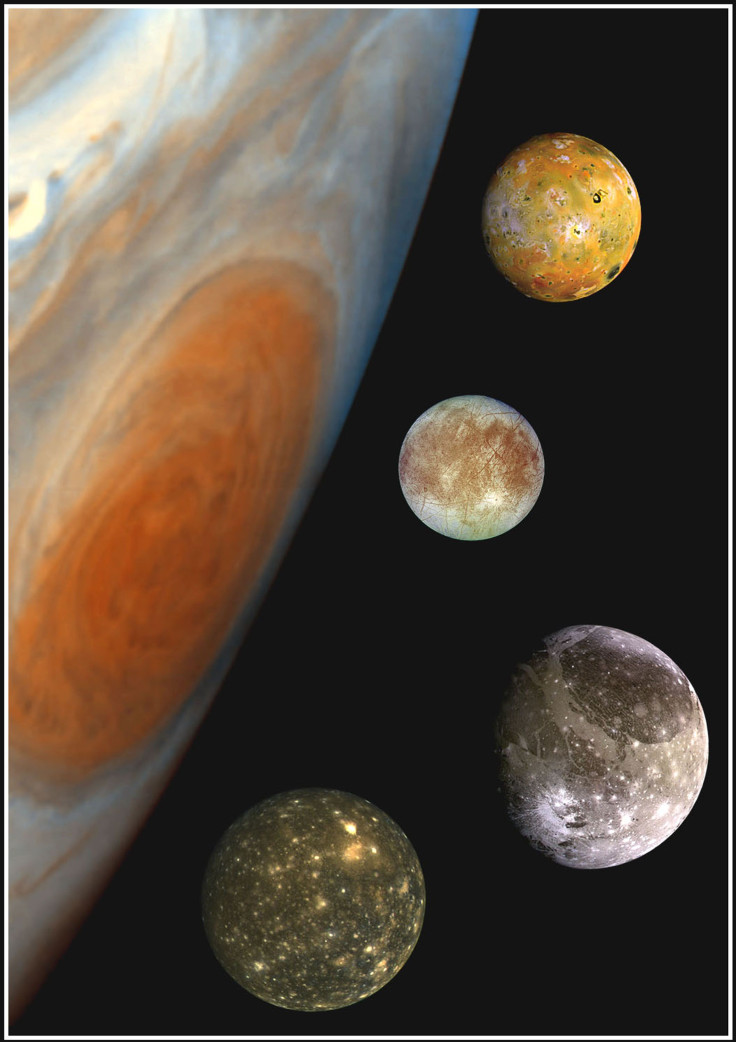How Jupiter's Moons Could Be Influencing Each Other

KEY POINTS
- Jupiter's moons are believed to have liquid subsurface oceans of water or magma
- It was long believed that Jupiter's influence is largely responsible for the moons' heating
- The moons could be influencing each other's oceans, contributing to each others heat budget
Researchers found that the subsurface oceans on Jupiter's moons are not only maintained by the gravitational pull of the planet but also by their interactions with each other.
Saturn may be the "moon king" of the solar system with 82 moons but Jupiter still has an impressive collection of nearly 80 moons, the largest and perhaps most well known of them being Io, Europa, Ganymede and Callisto.
These four Galilean moons are believed to have liquid interiors, with Europa, Ganymede and Callisto having oceans of liquid water or slushy ice underneath, and Io, which is believed to be the most active volcanic body in the solar system, possibly having an internal magma ocean.
These lunar worlds maintain their liquid interiors due to a process called tidal heating or the means by which the gravitational pull of another body, in this case the giant Jupiter, causes a planet or moon to essentially "stretch and squeeze," heating their interiors. But as the moons orbit the planet, the gravitational tugging also causes rises and falls in the oceans' tides, much like how the moon pulls the Earth's oceans.
"These tidal waves, or modes, contain substantial kinetic energy, and some fraction of that is converted into heat via turbulent dissipation," the researchers wrote in their study published in Geophysical Research Letters.
Although the moons also have this effect on each other, it was long believed that the heat in the Jovian moons' oceans is largely caused by radioactive decay and Jupiter's gravitational pull while the moons' effect on each other's tides has largely been ignored as a possible heat source. However, a team of researchers found that the moons may actually have a more significant effect on each other than previously thought.
The study, in which the researchers calculated the response of the Galilean moons' crusts and oceans to tidal forcing, revealed that the tidal resonances caused by Jupiter would only be effective in shallower oceans just a few hundred meters deep. But in deeper oceans, such as the ones that are likely in the Galilean moons, it is the moons' interaction with each other that can trigger significant resonances that could generate heat.
"Here, we show that these moon‐moon tides cannot in fact be neglected when considering tides as an energy source because they can excite these subsurface oceans near their natural frequencies," the researchers wrote in their study.
The moons are more tidally resonant with each other, so it is the moon-to-moon influence that causes more powerful subsurface tidal waves, which then leads to significantly more heating. This could mean that the moons also play a crucial role in the existence of each other's subsurface oceans.
"It's surprising because the moons are so much smaller than Jupiter. You wouldn't expect them to be able to create such a large tidal response," study lead author Hamish Hay, a postdoctoral fellow at NASA's Jet Propulsion Laboratory, said in a news release from the University of Arizona.
"The effect of moon‐moon tides may be even larger in the TRAPPIST‐1 system if any of the planets contain significant bodies of liquid, as has been suggested," the researchers wrote. "The habitability of closely packed ocean worlds may depend on these tides."
© Copyright IBTimes 2025. All rights reserved.






















